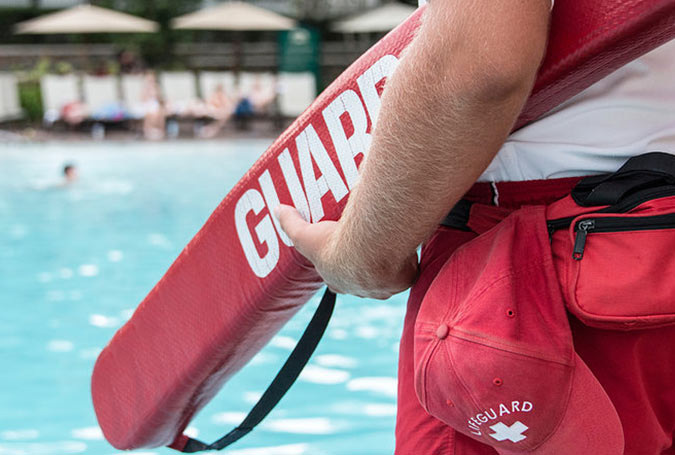With the weather warming up and more people getting ready to head to the pool, lake or beach, I want to take a closer look some of the equipment we see lifeguards carrying. I figure this may also help new lifeguards familiarize themselves with the tools of the trade.
As an old person who remembers Baywatch in the Hasselhoff days before the Rock and Zac Efron, the thing that stuck out the most to me was those red plastic flotation devices that everyone seemed to be carrying around.
Come to find out, those are called rescue cans, and they are responsible for saving countless lives since their invention in 1897. The first rescue cans were made of galvanized steel and had dangerously pointed ends. In the 1940s, new models were made of cork and balsa wood.
It wasn’t until 1970 that Captain Bob Burnside consulted Ron Rezek to design a seamless plastic, watertight container and added the handles to give us the modern style. Rescue cans now come with a shoulder harness and a 7 foot tow rope, which allows the rescuer to safely swim tow victims to shore without their struggle interfering with the rescuers movement.
In the last 30 years, a similar product has gained popularity in the lifeguarding community, called a rescue tube or rescue buoy. As you may have guessed, it is a floating buoy that lifeguards wrap around a victim in order to support the weight of both the rescuer and the distressed swimmer.
Preston Peterson, a championship surfer and innovative lifeguard, invented the rescue buoy with a hook and harness, known as the Peterson Belt, in 1935. Though the design has changed subtly over the years, the rescue tube remains a vital tool to helping save lives.
Similarly, ring buoys are often used to provide swimmers with support while in the water. These are the larger foam rings often spotted on the side of a lifeguard stand or lining rails of boats and ships.
They come in various sizes and usually have four or more connecting strips that hold a circular piece of rope around the outside of the ring. This rope allows several swimmers to take hold of the ring if necessary in order to provide relief while awaiting rescue.
Every day at the pool as a kid I was targeted by our next piece of equipment, the megaphone. It is not uncommon for air horns and megaphones to be used to alert swimmers to danger or to inform kids to stop sprinting around the outside of the pool area.
The last and often most overlooked equipment essential to lifeguards is the medical equipment. The spine board, a long surfboard shaped surface with grips, is often used when a victim has a collision or falls and cannot be moved until EMTs arrive.
Spine boards are often seen used in conjunction with head immobilizers, cushioned head guards with straps, used to secure the top part of the spine against the natural turn of the skull to either side.
Included in the list of lifeguarding tools are rescue masks and oxygen tanks and the classic but essential first aid kit. So now that we’re all familiar with the equipment keeping us safe, let’s try to help out our neighborhood lifeguards by playing safely. After all, nobody wants these tools being used on them.
Jason Allen Goss is a guest blogger for www.elifeguardonduty.com

